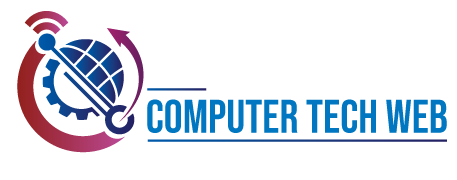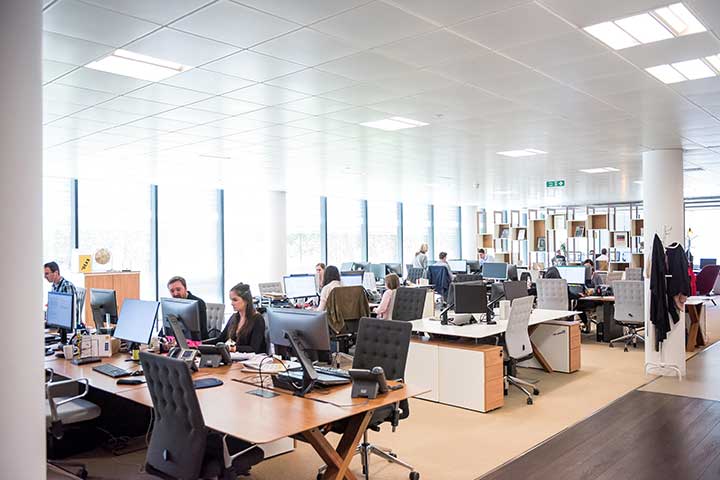Information: A Vital Asset For Your Company
In the fast-paced world of business, understanding what constitutes a vital asset for your company is crucial for sustained success and growth. But what exactly is a vital asset, and why is it so important to identify and leverage these assets? This article will explore the various types of vital assets, their significance, and how to maximize their value for your company.
Table of Contents
What Are Vital Assets?
Vital assets are the essential resources that significantly contribute to a company’s success. These assets can be tangible or intangible and encompass everything from physical resources and financial capital to human talent and intellectual property.
Public information, accessible to everyone. This may be the one that is intended to be displayed on the company’s web portal.
Types of Vital Assets:
Role of Vital Assets in Business Success: Vital assets are the backbone of any business. They drive operations, support growth, enhance competitiveness, and ensure long-term sustainability. Proper management and optimization of these assets are essential for achieving business objectives and maintaining a competitive edge.
- Human Capital: Employees and their skills.
- Intellectual Property: Patents, trademarks, and copyrights.
- Technological Assets: Software, hardware, and IT infrastructure.
- Financial Assets: Cash reserves, investments, and revenue streams.
- Physical Assets: Buildings, machinery, and equipment.
- Brand and Reputation: Company’s brand image and public perception.
- Data: Information and data resources.
- Customer Relationships: Customer base and loyalty.
- Supply Chain and Partnerships: Relationships with suppliers and partners.
- Innovation and Creativity: Company’s ability to innovate and create.
Human Capital as a Vital Asset
Importance of Employees: Employees are often considered the most critical asset of a company. Their skills, knowledge, and dedication directly impact productivity and innovation. Investing in human capital leads to improved employee performance and organizational success.
Also Read: Tips for Choosing a Laptop for Children
Importance of Financial Planning and Management: Financial planning ensures that resources are allocated efficiently, and financial risks are mitigated. Regular financial audits and assessments help maintain fiscal health.
Strategies to Develop Human Capital
Retaining Top Talent: Retention of top talent is crucial. Implementing competitive compensation packages, recognizing and rewarding performance, and fostering a positive company culture are key strategies to keep your best employees.
- Training and Development: Regular training programs to enhance skills.
- Career Growth Opportunities: Providing clear career paths and growth opportunities.
- Employee Engagement: Creating a positive work environment to boost morale and productivity.
Intellectual Property as a Vital Asset
Protecting Intellectual Property: Protecting intellectual property is essential to prevent unauthorized use and to maintain competitive advantage. This can be achieved through patents, trademarks, copyrights, and regular monitoring for infringements.
Keeping Up with Technological Advancements: Staying updated with the latest technological trends ensures your company remains competitive. Regularly upgrading systems and investing in emerging technologies can provide a significant edge.
Types of Intellectual Property
- Patents: Protect inventions and innovations.
- Trademarks: Protect brand names and logos.
- Copyrights: Protect creative works like music, books, and software.
Leveraging Intellectual Property for Growth: Intellectual property can be a significant revenue source through licensing, partnerships, and commercialization. It also enhances the company’s market position and brand value.
Technological Assets
Importance of Technology in Modern Business: Technology is a vital asset that drives efficiency, innovation, and competitive advantage. It supports various business operations, from communication and data management to production and customer service.
Investing in the Right Technology: Investing in technology that aligns with your business goals is crucial. Focus on scalable and flexible solutions that can adapt to future needs and advancements.
Financial Assets
Managing Financial Resources: Effective management of financial assets is critical for business sustainability and growth. This includes budgeting, investing, and optimizing cash flow.
Strategies for Financial Growth
- Diversifying Revenue Streams: Reducing dependency on a single source.
- Cost Management: Implementing cost-saving measures without compromising quality.
- Investment Opportunities: Exploring new markets and investment avenues.
Physical Assets
Importance of Physical Assets: Physical assets like buildings, machinery, and equipment are fundamental to production and service delivery. Proper management and maintenance are essential to ensure their longevity and efficiency.
Maintenance and Management of Physical Assets: Regular maintenance schedules and proper management practices prevent downtime and extend the life of physical assets, reducing overall costs.
Maximizing the Value of Physical Assets: Optimizing the use of physical assets involves regular audits, upgrades, and ensuring they are utilized to their full potential.
Brand and Reputation
Building a Strong Brand: A strong brand differentiates your company from competitors and builds customer loyalty. It’s essential to invest in branding efforts that resonate with your target audience.
Importance of Company Reputation: A good reputation attracts customers, partners, and talent. It also provides a buffer during crises and helps in maintaining trust.
Strategies to Enhance Brand and Reputation
- Quality Products and Services: Delivering consistent quality.
- Customer Engagement: Actively engaging with customers through various channels.
- Corporate Social Responsibility: Contributing positively to society and the environment.
Data as a Vital Asset
Role of Data in Business Decision-Making: Data is a powerful asset that informs decision-making, strategy development, and operational improvements. It provides insights into market trends, customer behavior, and business performance.
Information for internal use, accessible to all members of the company. This can be the employee email directory, phone book, schedules, general operating procedures, etc.
Strategies for Effective Data Management
Ensuring Data Security and Privacy: Protecting data from breaches and ensuring privacy is crucial. Implementing robust cybersecurity measures and adhering to data protection regulations safeguards this valuable asset.
- Data Collection: Implementing systems to collect relevant data.
- Data Analysis: Using analytical tools to derive insights.
- Data Governance: Ensuring data quality, security, and compliance.
Customer Relationships
Importance of Customer Relationships: Strong customer relationships drive repeat business, referrals, and brand loyalty. They are fundamental to sustained business success.
Building Strong Partnerships: Collaborating with reliable partners enhances operational efficiency and opens new opportunities for growth.
Strategies to Build and Maintain Customer Relationships
Leveraging Customer Feedback for Improvement: Customer feedback provides insights into areas for improvement and innovation. It helps in refining products, services, and customer experiences.
- Customer Service: Providing exceptional service.
- Personalization: Tailoring interactions and offers to individual customers.
- Feedback Mechanisms: Regularly seeking and acting on customer feedback.
Supply Chain and Partnerships
Importance of a Robust Supply Chain: A strong supply chain ensures timely delivery of products and services, minimizing disruptions and maintaining quality standards.
Managing Supply Chain Risks: Identifying and mitigating risks in the supply chain through diversification and contingency planning ensures business continuity.
Innovation and Creativity
- Role of Innovation in Business Success: Innovation drives business growth, differentiation, and competitiveness. It involves developing new products, services, and processes.
- Fostering a Culture of Innovation: Creating an environment that encourages experimentation, risk-taking, and continuous learning fosters innovation.
- Encouraging Creativity Among Employees: Providing resources, time, and recognition for creative efforts boosts employee motivation and leads to innovative solutions.
Sustainability as a Vital Asset
Importance of Sustainability: Sustainability is becoming increasingly important for long-term success. It involves adopting practices that are environmentally and socially responsible.
Confidential information, only accessible to authorized persons. They can be the case of information on projects, payroll, etc.
Strategies for Sustainable Business Practices
Benefits of Being a Sustainable Business: Sustainable businesses attract customers, investors, and talent. They also mitigate risks associated with environmental and social issues.
- Resource Efficiency: Reducing waste and optimizing resource use.
- Green Technologies: Investing in sustainable technologies.
- Community Engagement: Supporting local communities and initiatives.
The Role of Leadership in Managing Vital Assets
Importance of Effective Leadership: Effective leadership is essential for managing vital assets. Leaders set the vision, allocate resources, and motivate teams.
Like everything, information also has a life cycle, and regardless of the medium, it is on, sooner or later, it will have to be eliminated. For this reason, it is essential to know how to destroy the information when it has already fulfilled its function or is at the end of its life cycle.
Leadership Strategies for Asset Management
Building a Visionary Leadership Team: A visionary leadership team drives innovation and growth. Investing in leadership development and succession planning ensures long-term success.
- Strategic Planning: Developing and implementing strategies for asset optimization.
- Empowering Teams: Delegating responsibilities and fostering a collaborative environment.
- Continuous Learning: Encouraging leadership development and staying updated with industry trends.
Measuring and Evaluating Vital Assets
It is essential to keep information safe and prevent anyone who should not access, modify or even destroy it. Another fundamental aspect is to have the information well catalogued so that it is easy to find it and filter who can have access to it.
- Key Performance Indicators (KPIs) for Asset Management: KPIs such as ROI, customer satisfaction, and employee engagement help measure the effectiveness of asset management strategies.
- Regular Evaluation and Improvement: Continuous evaluation and improvement ensure that assets remain aligned with business goals and adapt to changing needs.
- Using Feedback to Enhance Asset Value: Feedback from stakeholders, including employees, customers, and partners, provides valuable insights for enhancing asset value.
Considerations for protecting information
Information is one of the most important assets that a company has. Without it, it is impossible to work because if you cannot contact your suppliers, you cannot access your client portfolio, or your website is not accessible, you may have a severe problem.
- Information access control: Guarantee that only authorized persons can access information, applying the principle of least privilege and establishing who can access each type of information.
- Catalogue the information: It is essential to keep the information well catalogued according to its criticality so that it is easy to identify what character it is and apply the necessary measures.
- Information encryption: Protecting confidential information using encryption tools prevents an unauthorized person from reading the report. When transmitting data, it must also be applied to avoid possible leaks during transmission or victims of a man-in-the-middle attack.
- Backups: To avoid any information loss, it is essential to have a backup policy. These should be done periodically and stored in a safe place. Thus, in a cybersecurity incident, such as a ransomware attack, the backups would be secure and could be restored.
- Destruction of information: Information that is not useful for the company must be appropriately destroyed. What is not helpful for our company could be a rival company or involve an information leak.
- Awareness: Awareness is essential to maintain information security. It is necessary that all organisation members are alert and trained to manage information, identify threats and know how to react in the event of a security incident.
Also Read: Document Signing: Digitally Sign Documents
FAQs on Information
What is a vital asset in a business context? A vital asset in a business context is any resource that significantly contributes to the company’s success. This can include human capital, intellectual property, technology, financial resources, and more.
How can a company identify its vital assets? A company can identify its vital assets by analyzing its operations, goals, and market position. This involves assessing which resources are crucial for achieving business objectives and sustaining competitive advantage.
What strategies can be used to protect intellectual property? To protect intellectual property, companies can use patents, trademarks, copyrights, and regular monitoring for infringements. Legal action can be taken against unauthorized use to maintain competitive advantage.
How important is technology as a vital asset? Technology is extremely important as it drives efficiency, innovation, and competitiveness. Investing in the right technology and staying updated with advancements is crucial for business success.
What are the benefits of focusing on sustainability as a vital asset? Focusing on sustainability attracts customers, investors, and talent. It also mitigates risks associated with environmental and social issues and ensures long-term success by adopting responsible business practices.
Conclusion
Understanding and leveraging vital assets is crucial for any company aiming for sustained success and growth. By identifying key assets, investing in their development, and continuously evaluating their performance, businesses can create a strong foundation for future success. Whether it’s human capital, technology, financial resources, or customer relationships, each asset plays a critical role in the overall health and prosperity of the company.


![[pii_pn_52dba67008cf3877] Error Code](https://computertechweb.com/wp-content/uploads/2020/12/pii_pn_52dba67008cf3877-Error-Code.jpg)
![[pii_email_cd4b80dbd951adb0d4dd] Error Code Solved](https://computertechweb.com/wp-content/uploads/2020/12/pii_email_cd4b80dbd951adb0d4dd-Error-Code-Solved.jpg)
